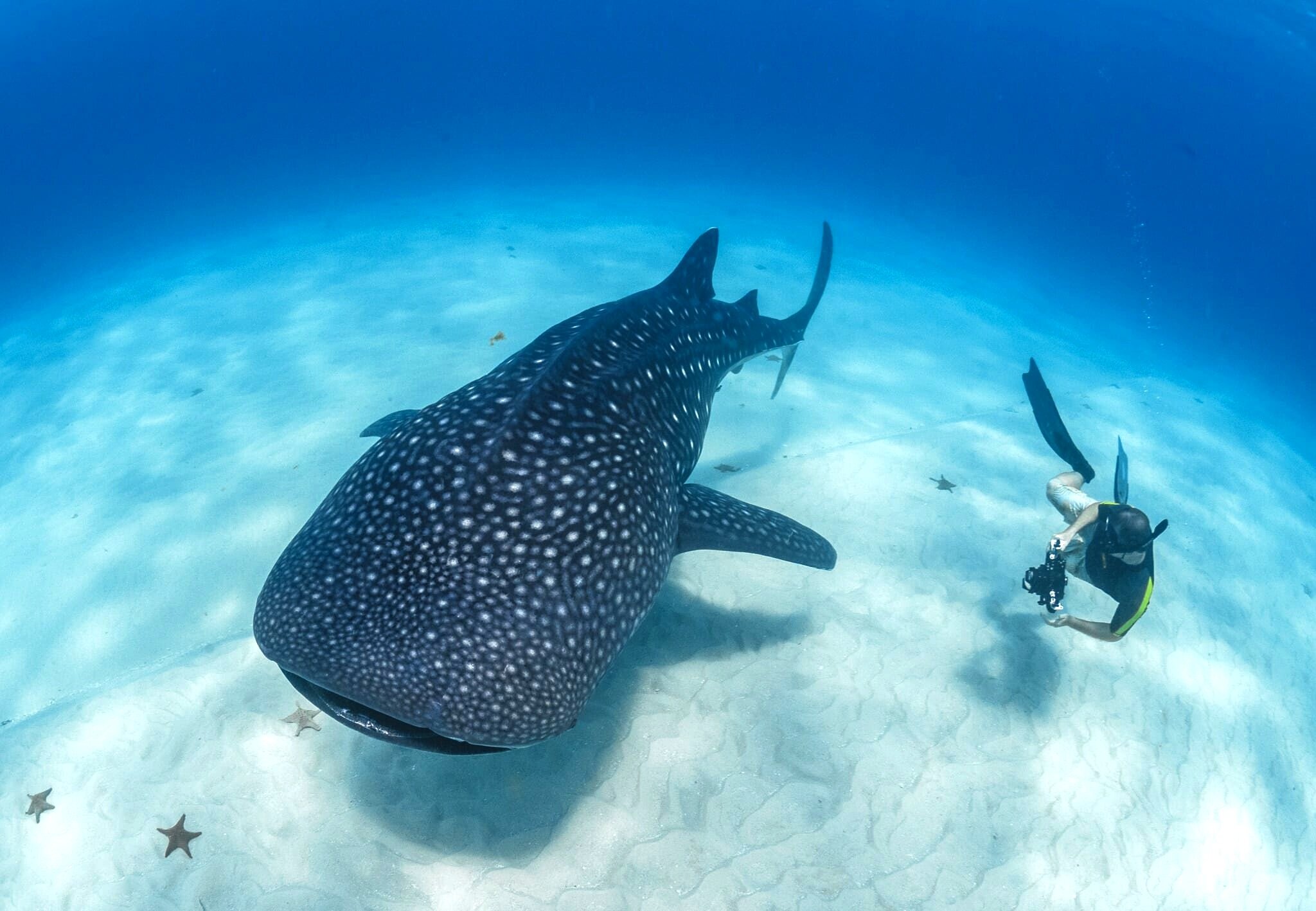Underwater Macro Photography with the Sony A7R III
Dr. Simon J Pierce is a co-founder of the Marine Megafauna Foundation, where he leads the global whale shark research program, and an award-winning marine wildlife photographer. About Simon.
I’ve just been testing and refining my gear configuration for macro, so I thought it’d be useful for Future Simon – and hopefully you too – to write up some notes on underwater macro photography with the Sony A7rIII camera, Sony 90 mm macro lens, and Nauticam NA-A7RIII housing.
Underwater macro exposure settings
My default settings are 1/200 sec, f/16, and ISO 200. My Sea & Sea YS-D2 strobes are set on 22. I shoot with both the camera and strobes in manual modes. I’ve tried to increase my depth of field by using f/22 (ISO 200, 1/200 sec) but the resulting photos were noticeably less sharp than at f/16, presumably due to diffraction.
To get a correct exposure at f/22 I also had to bump the strobe power up to their maximum, 32, which made the YS-D2s unhappy if I was taking several shots in a row. One of the strobes started flashing at me at one point, then stopped working – I presume it overheated. It was fine after I turned it off and gave it a short rest.
I wish the camera had a faster strobe sync speed – Sony advertises 1/250 sec, but it turns out that only works for certain high-powered flash systems. Dagnabbit. It would be nice to eliminate or minimize ambient light through a faster sync speed.
If you want to learn or improve your underwater photography, I highly recommend Alex Mustard’s book: Underwater Photography Masterclass. It’s a fantastic guide to a rather technical subject!
Dealing with crappy autofocus
The Sony 90 mm is notoriously slow to focus. This is definitely a thing, but you can deal with it. First, set the focus limiter on the lens to 28 – 50 cm. That helps. Setting the focus mode to AFS and “release priority” might help a bit more. Ultimately I’ve started using the DMF focus mode – Direct Manual Focus – which is super useful. Here’s a great explanatory video by Mark Galer (my main guru for Sony camera settings):
To get the best use out of DMF, decouple the shutter from autofocus. I’ve set my A7rIII to back-button focus using the AF-ON button. The dedicated thumb lever that Nauticam has on the housing makes this easy to use. When you press the AF-ON button with the lever, the camera uses AFS autofocus to get close(ish) to the correct focal plane. Once it’s in the correct neighborhood, you can release the button and use focus peaking to get the exact focus you need by moving the camera forward and back slightly.
What’s focus peaking? It’s great, that’s what it it. I’ve set my peaking level to High, and red in color. The LCD (or EVF, if you use it for composition) will then highlight everything that is in focus with a red fringe. The depth of field at f/16 is reeeeeeally thin, so the peaking makes life far easier. Frankly, I’d find the 90 mm extremely frustrating to use without this focus aid.
A small fish protecting its eggs spotted while diving at Tulamben, Bali, Indonesia
Sea anenome fluorescence under blue light at Nosy Sakatia, Madagascar
I do own the manual focus gear for the 90 mm, although I haven’t used it too much. Unfortunately, the gearing on the Nauticam housing makes manual focus to be a slow, laborious process. I’ll probably use the focus gear on the next trip though. DMF is okay, but in practice it both hunts a lot, and it’s hard to find the minimum focus limit. Some of the nudibranchs we found in Tulumben (and when I say “we”, I mean our guide or Mads, I’m useless) were teeny, so it would have been useful to be able to quickly set my focus distance to 28 cm.
A focus light may also improve matters.
Mark Galer did another video on speeding up low-light autofocus for Sony systems, which I found useful while I was working out the above settings:
Customizing the camera for underwater macro photography
I tend to set the camera up for the specific shooting requirements I need for different projects. I’ve set all the above to memory recall 2 on the camera, although it doesn’t save button assignments. Aside from the above, there are a couple more customizations I make for macro:
I’ve turned the movie recording function off (I wish that button could be reassigned, but it can’t) when I’m not in movie mode. It’s too easy to accidentally hit that lever on the housing.
My AEL button is set to ISO.
I’ve set C3 to switch manually to “Super 35” (= crop sensor, APS-C) mode, which is a 1.5x digital zoom. I only used it a couple of times at Tulamben, but it can make it easier to get exact focus and composition with particularly tiny subjects. The files are still 18 MP with the 1.5x crop (the joy of a high-resolution sensor), so they remain eminently usable – the lens becomes, effectively, a 135 mm macro.
At some point, I’d like to buy the Nauticam SMC-1 for some true supermacro. But I digress.
Anyway, that’s all very geeky, but macro is super fun! It’s totally worth geeking out over. Hope this all helps someone out there… if you’ve got any questions or suggestions, I’d love to hear from you in the comments.
Simon


















